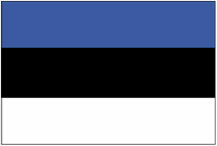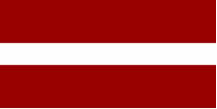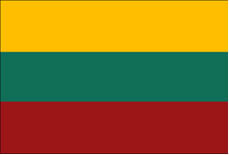Estonia, Latvia and Lithuania form the Baltic States, these nations are located in the northeastern portion of the European continent, on the east coast of the Baltic Sea. Together, they have a territorial extension of 174,800 square kilometers and a population of 6,876,172 inhabitants.
These three nations were part of the extinct Union of Soviet Socialist Republics (USSR), and declared their independence in 1991, thus becoming autonomous states.
With the end of the USSR in 1991, the former Soviet republics, together with Russia, created the Commonwealth of States Independents (CIS), which consists of an economic bloc whose main objective is to establish an economic and defense system among the nations. Of all the former Soviet republics, only the Baltic countries (Estonia, Latvia and Lithuania) have never joined the CIS, as these nations, since independence, have always tried to reduce political relations with Russia, the main member of the block.
Currently, the Baltic States are members of the European Union (EU) and have high economic development rates: an average of 6% per year. Social development has also been promoted in these nations, with constant rises in the Human Development Index (HDI).
However, the Baltic States have problems linked to the period of integration into the Soviet Union. All these nations have a portion of the population of Russian origin, in Estonia and Latvia, for example, 30% of the population is of Russian origin. This fact makes Russia exert strong pressure on the internal politics of these countries, trying to exert influence in the political and economic affairs of the region.
Baltic countries data:
Estonia:
Capital: Tallinn.
Territorial extension: 45,230 km².
Language: Estonian.
Population: 1,283,771 inhabitants.
Demographic density: 28 inhab./km².
Urban population: 67.6%.
Currency: Estonian Krona.
Gross Domestic Product (GDP): $22.3 billion.
Human Development Index (HDI): 0.840 (very high).

Latvia:
Capital: Riga.
Territorial extension: 64,560 km².
Language: Latvian.
Population: 2,041,111 inhabitants.
Demographic density: 32 inhab./km².
Urban population: 67.4%.
Currency: Lat
Gross Domestic Product (GDP): $28.3 billion
Human Development Index (HDI): 0.810 (very high).

Lithuania:
Capital: Vilnius.
Territorial extension: 65,300 km².
Language: Lithuanian.
Population: 3,008,287 inhabitants.
Demographic density: 46 inhab./km².
Urban population: 66.5%.
Currency: Lithuanian Litas.
Gross Domestic Product (GDP): 42.3 billion dollars.
Human Development Index (HDI): 0.783 (high).
By Wagner de Cerqueira and Francisco
Graduated in Geography
Brazil School Team
Source: Brazil School - https://brasilescola.uol.com.br/geografia/paises-balticos.htm

